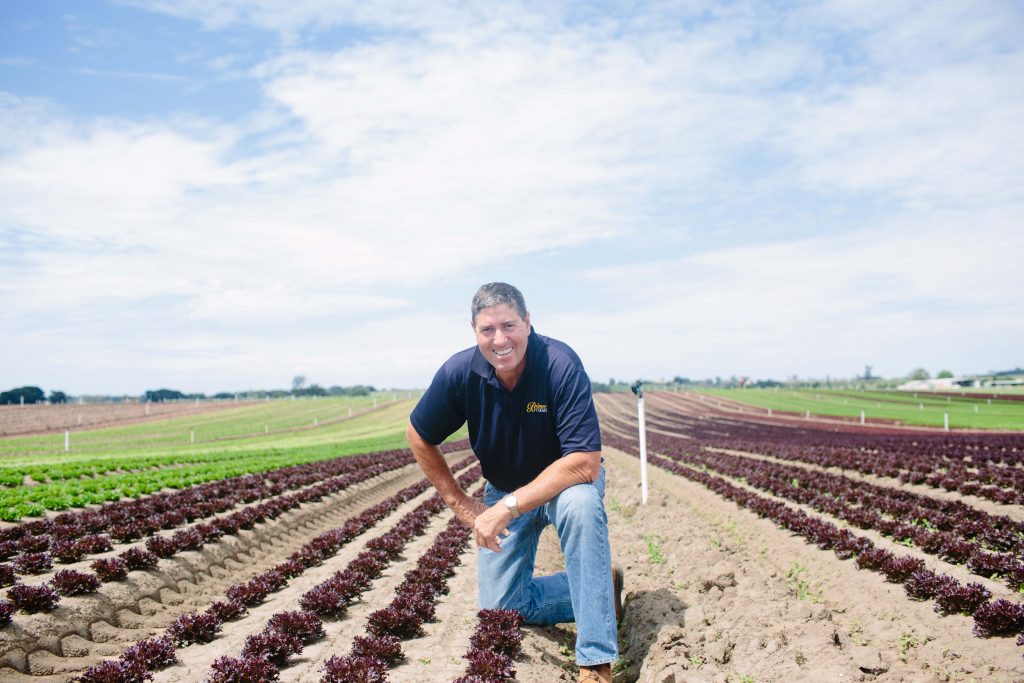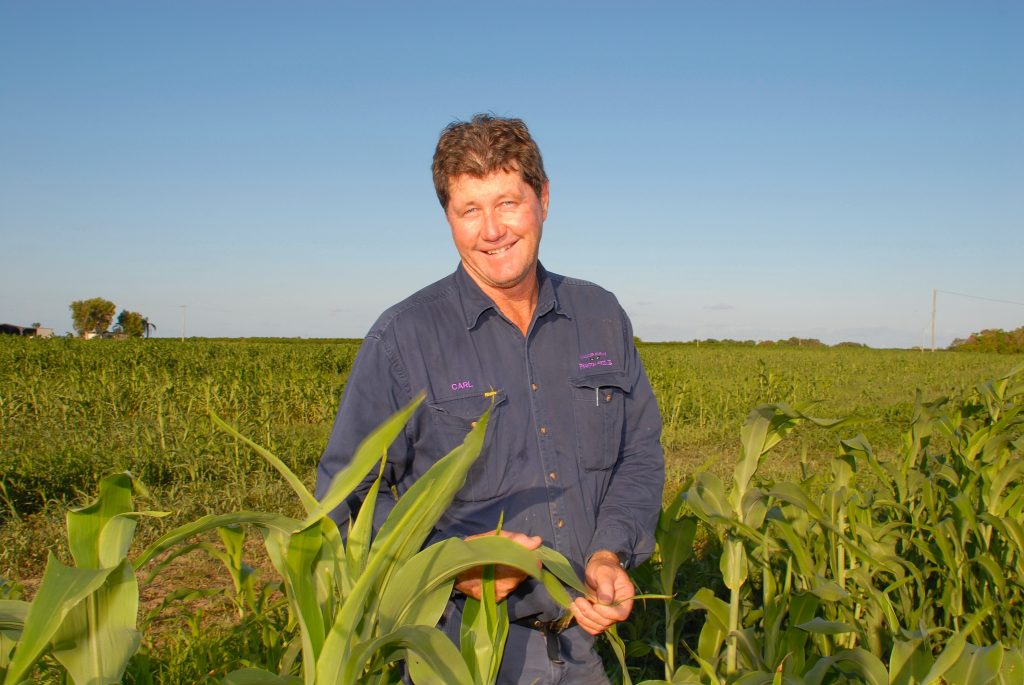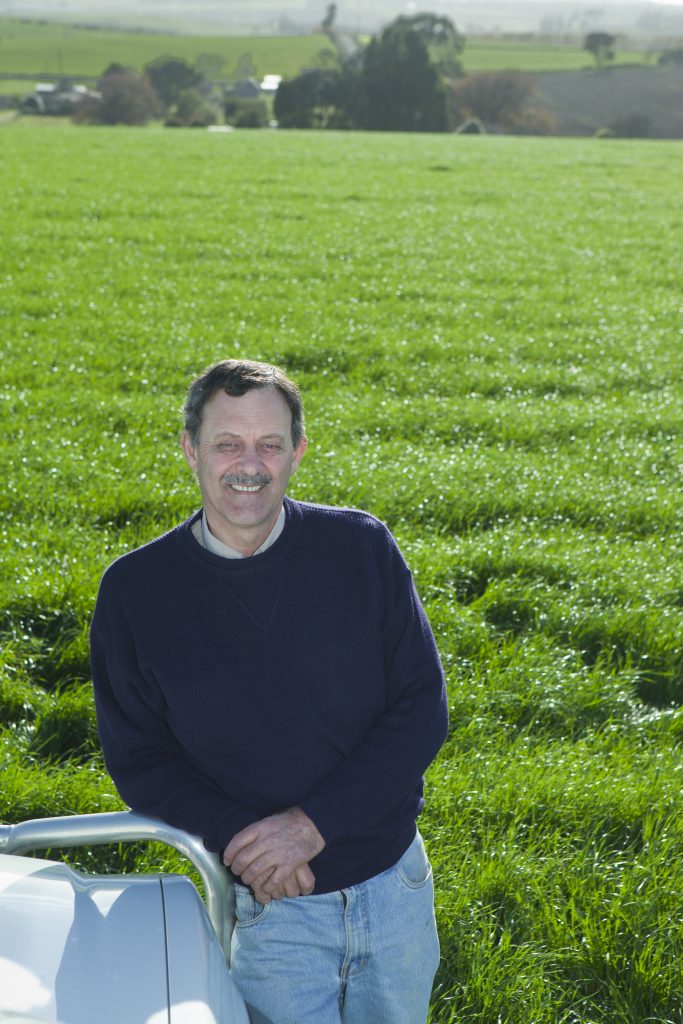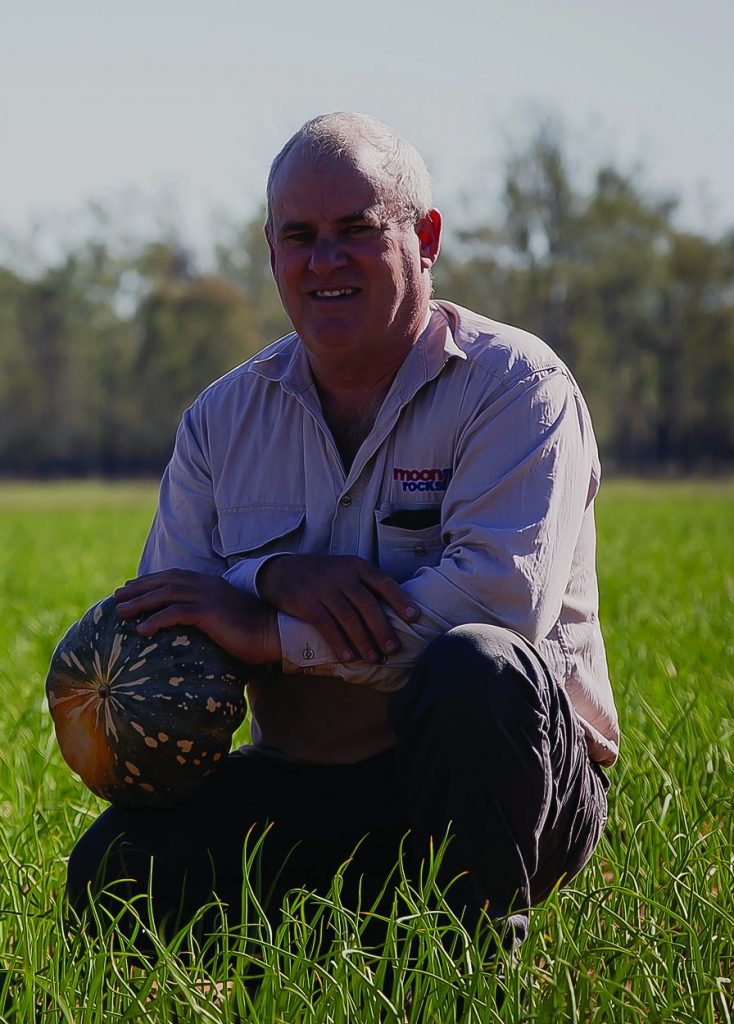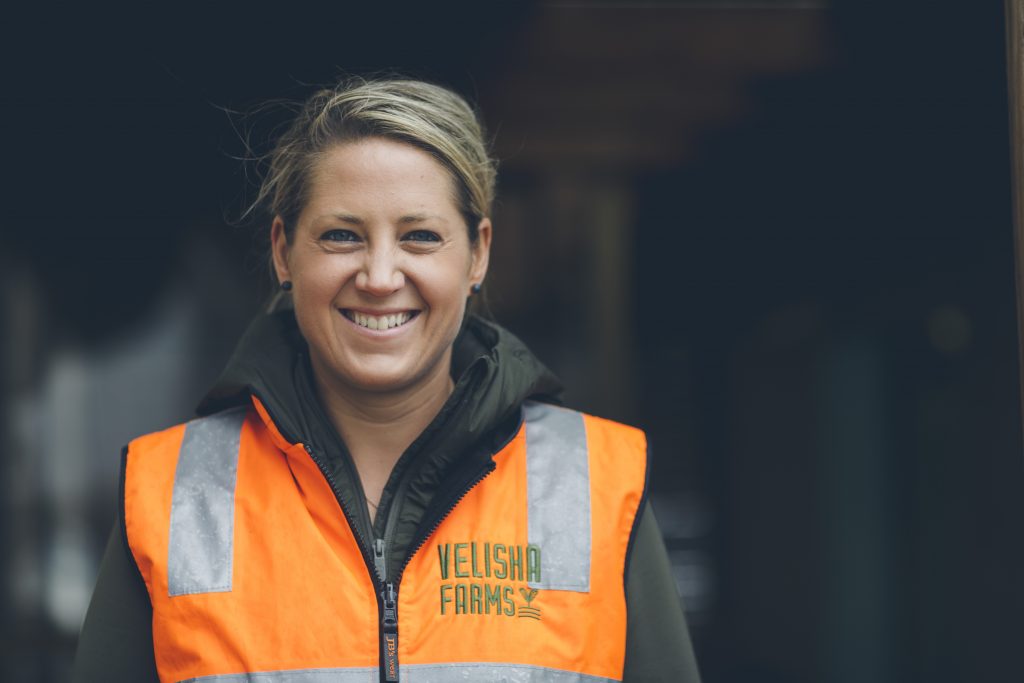AUSVEG 2022 Federal Election Priorities
At almost every meal, half a plate is dedicated to us, however we are often forgotten about.
Vegetables and potatoes are not only an important part of the Australian diet, but the sectors are also significant components of the Australian agriculture framework.
AUSVEG is the national peak body of vegetable and potato growers, representing the industry that is helping to feed Australians and their families. We are run by growers, for growers, and the industry is ready to grow to new heights.
The AUSVEG 2022 Federal Election Priority document brings together these core concepts of combining broader Australian social benefits of eating vegetables and potatoes with the positive employment and economic benefits that growers generate for their regional communities.
The priorities outlined in this document will allow the $4.8 billion sector to not only grow in value, but also help boost other parts of the economy and help secure the next generation of jobs in our regional and rural communities.
These priorities have been developed through extensive consultation and collaboration with AUSVEG’s state members, as well as growers across the country.
The priorities are set around three central themes:
Driving increased consumption
Driving increased consumption leads to both domestic and overseas opportunities.
Increasing domestic consumption requires bold new thinking to tackle a persistent and worsening problem. Data from the Fruit & Vegetable Consortium (FVC) indicates that vegetable consumption is too low, and declining over time. However, the FVC outlines the benefits of increasing vegetable consumption, with an increase of just half a serve of vegetables per day conservatively generating an incremental increase in industry returns of $634 million per year, which is shared by all parties along the food supply chain. Not only that, but every new job also created in the industry supports an additional job in the regional economy.
On the export front, the vegetable industry is just getting started. Increasing trade and market access to countries such as Singapore, UAE, Malaysia, South Korea, Hong Kong and Thailand will further enhance our selling opportunities for growers.
Developing more effective businesses
Developing more efficient businesses starts with access to a more efficient, reliable and competent workforce.
While the Australian Agriculture Visa and Pacific Island programs are significant pieces of that complex puzzle, other pieces include affordable and reasonable accommodation options for workers and greater skilled career opportunities for the domestic workforce. Improved business management and negotiation skills are critical for farm businesses to become more prepared to effectively negotiate with their buyers and their banks.
While greater market transparency will increase grower knowledge of pricing fluctuations and give them access to the free, timely and accurate market information they need to make more informed decisions for benefit of their business.
Becoming a more resilient industry
Becoming a more resilient industry is about planning for the future.
This includes better understanding our customers’ expectations and preparing for the constant challenges that the climate brings. From fires, floods, droughts and COVID, our growers have dealt with a wide range of issues outside of their control, but they can prepare to mitigate the impacts on their businesses and on our future food security. It also includes improved management for food safety and how the uptake in new technology can assist in ensuring Australia’s fresh produce is safe for all consumers.
These central themes are the core of the development of the vegetable and potato sector as it strives to become an $8 billion sector by 2030.
AUSVEG’s Federal Election Priorities and Case Studies
The issue of alarmingly low and declining domestic consumer demand is now a multi-billion-dollar problem that is impacting the economic, health, social and environmental wellbeing of all Australians.
This problem starts at the paddock, threatening operating viability and the confidence of Australian growers and flows right across the fresh food supply chain. It directly impacts the livelihood of our regional communities, with low economic growth, low investment, and the loss of jobs. This flows into Australian homes with poor dietary choices directly impacting our physical and mental health, and on to our health care system with overweight and obesity now the leading cause of chronic disease. This in turn drives our escalating health cost burden and it flows directly back to Australian taxpayers and the Government.
This is a serious problem in need of a serious solution.
With agriculture heralded to lead the economic recovery in early 2022, Federal Government support is urgently needed to stimulate a significant and sustained increase in the daily vegetable intake of Australians.
Unlike wider agriculture where 70% of produce is exported to global markets, the Australian vegetable industry exports just 6.4% of produce, making it heavily reliant on the buoyancy of the domestic market.
Australians today are eating less than half the recommended daily 5 serves of vegetables – and this number is steadily declining – in fact, we are now consuming ½ a serve fewer vegetables per day, equating to 13kg per person per year less than we were in 2001. This equates to staggering $1.2 billion of GVP per year that is lost from the farmgate, and this is felt right through the fresh produce supply chain and directly contributing to our escalating health burden, social isolation, and environmental footprint.
Australia is now the 5th most obese country in the world, with its highest (and rising) rate of obesity ever. In fact, more than 70% of our population is now overweight or obese. The cost of poor health due to low vegetable intake is a relentless burden on our public health system and taxpayers. What’s most concerning is that it’s our younger generation that are worst affected – that’s Aussie kids, teens, and young adults. The need for convenience has driven the meteoric rise of packaged, processed, and fast foods. Sadly, this issue is made worse by the loss of intergenerational cooking skills, social isolation, low food literacy, and perceived affordability.
The solution is driving long-term behavioural change for a healthier Australia and now is the right time to urge consumers back towards vegetables.
Investing to grow vegetable consumption offers a compelling case for investment:
- If Australians consumed just one additional serve of vegetables per day, this would deliver:
- $500 million reduction in health expenditure per annum
- $1.3 billion increase in returns to Aussie growers and food supply chain operators
- Driving an increase of just ½ a serve per day will lead to improved health and wellbeing – reducing mental and physical health issues, obesity, and other illnesses – generating more than $1 billion economic value after 11 years to Australian taxpayers and Governments at all levels.
- Every $1 invested in a behaviour change program to increase vegetable consumption results in a $10 return on investment.
- Every new job created in the Australian food industry supports an additional job in the regional economy.
What is the Fruit & Vegetable Consortium?
The Fruit & Vegetable Consortium (FVC) is a collective of organisations led under the auspice of AUSVEG and Nutrition Australia with a unique and powerful membership that starts at the paddock with Australian farmers, and matches this expertise and capability of the food, health, and consumer sectors to collectively drive what’s on the plate.
The FVC exists to provide the strategic direction and the collaborative action required to achieve a significant and sustained increase the fruit and vegetable intake of Australians.
The motivations for collaborative action are:
- To improve health outcomes through activating behavioural change to Australian dietary habits.
- To improve economic and social outcomes by:
- Reducing national health costs; and
- Generating economic activity that flows through to vegetable production regions of Australia.
- To improve environmental outcomes through:
- Reduced wastage in the supply chain and home
- More environmentally sustainable food production.
Providing growers access to an efficient, reliable and competent workforce has been at the center of AUSVEG’s advocacy for many years. It continues to be the single largest issue for growing businesses, no matter whether they are big, medium or small.
The Australian Agriculture Visa is a substantial critical step forward for vegetable and potato growers across the country. However, like any new visa, there is still a lot of work to be done to ensure the newly created visa meets the needs of those growers. Workforce is about 30-40% of the total cost of production for growers, so it is critical that they can access the efficient workforce they need to compete across the world.
Labour Hire contractors also play a significant role in the sector, particularly for harvest labour, which is why growers are calling for all labour hire businesses to be licensed, so growers can have confidence that the labour hire is operating appropriately.
As the vegetable and potato industry embraces new technology and advancements both in the field and in the packing shed, it is also critical that the skilled labour required are meeting growers’ needs. It is for this reason, industry is calling for greater investment in the tertiary and vocational education pathways for the industry.
Case study – Carl Walker
Carl Walker
Phantom Produce
Bowen, QLD
CARL Walker runs Phantom Produce with his wife Trudy, and son Troy, in the Whitsunday region of Queensland.
With the help of 20 employees, Phantom Produce turns over just shy of $2 million per year and sends about 100,000 units of fresh produce including capsicums, cucumbers, cherry tomatoes and truss tomatoes to New Zealand and major cities around Australia.
Phantom produce is a small family run business with three full time employees and 17 casual staff which are made up of Australians and Visa holders.
“As with any business, having a workforce that is committed and takes pride in what they do is the key to a successful business,” Carl said.
“We work as a team and rely on each other to harvest, and process produce when it is ripe.
“A reliable workforce makes a huge difference in our bottom line, ensuring nothing is wasted.”
“Knowing that workers will show up and do the job properly and with care is essential.
“Produce that isn’t picked, wastes money, time, and resources.
“It is money that could have gone to an employee, their family, and money that could have then helped a community locally or abroad.”
Carl is well-known in the Bowen community having served as president of the Bowen Gumlu Vegetable Growers’ Association for many years.
Carl said he sees the importance businesses like his has on the community by bringing in a workforce which supports other local businesses.
The success of a grower’s business largely depends on the success of its soil management. Australian growers have been leading the way with soil management and soil health globally for decades. And while much of the public discussion is made around farmers behaving sustainably, growers are clear that they have always and will always look for practical solutions to improve their farm business.
The agriculture sector contributes 14% to Australia’s emissions. Of the total agriculture emission, horticulture emits just 1%. Whilst horticulture emits a very small amount, it has an enormous capacity to sequester emissions. Growers play a key role in reducing Australia’s emissions, but the industry requires further investment and support to make greater changes. Funding to transition their fuel and electricity to renewable sources will help to remove as much as 70% of Horticulture’s emissions.
Much of agriculture’s net zero emissions challenges are in the livestock sector, however fertiliser is posing a significant future challenge for vegetable and potato growers. Fertiliser is posing a significant future economic and environmental challenge for vegetable and potato growers.
Creating fertiliser is highly energy-intensive, so if energy costs continue to rise, growers’ margins will tighten, meaning alternative options need to be found. The industry needs to begin regenerating systems for the long-term, including building back lost soil, moving into renewable energy, investing in local communities, and creating circular economies while making it costs effective for growers to do so.
Case study – Adam Schreurs
Adam Schreurs
Schreurs and Sons,
Clyde, Melbourne and Middle Tarwin, Gippsland, Victoria
VICTORIAN vegetable grower Adam Schreurs, Schreurs & Sons, is leading the way in regenerative vegetable farming.
He was one of the first vegetable farmers in Victoria to implement Integrated Pest Management (IPM) on his property.
With the help of about 150 employees Schreurs and Sons farm grows more than 200,000 kilograms of celery each week, alongside 30,000 kg of leeks, baby spinach, and rocket. The business supply’s all major supermarkets and wholesale markets throughout Australia. They also export produce to Singapore, Malaysia, and the United Arab Emirates.
Adam is a firm believer that it is possible to work with nature whilst maintaining a profitable thriving business.
At Schreurs, its major focus is around sustainable growing methods which help to sequester carbon through cover cropping, minimum tillage, boundary planting and protecting native vegetation.
It is important to Adam that we share knowledge about regenerative practices and natural resource management.
”The whole world is heading towards a sustainable future, and we need to be a part of that shift,” Adam said.
“Our customers are seeking fresh produce that has this in mind.”
Biosecurity is EVERYONE’S responsibility.
Any person who travels into the country carries an amount of risk of spreading harmful pests and disease. Often, they are unaware and oblivious of the consequences of their actions. But growers bear the cost of these mistakes from chemical management on-farm to paying for the mistakes of others through their own Biosecurity levies.
A strong biosecurity regime supports a range of industries that are vital to regional communities, including agriculture, tourism and hospitality.
Therefore, a more balanced, long-term approach is needed to biosecurity funding and resourcing. The recent $371 million budget allocation is great for the short-term, but on-going funding is needed. Each traveler and importer carry a level of biosecurity risk and must pay the appropriate amount for that risk.
Whilst Australia has a strong border force that has prevented the entrance of many disastrous pests and disease, there are still biosecurity risks entering. Each year new pests such as the tomato-potato psyllid, serpentine leafminer, brown marmorated stink bug, and fall armyworm threaten our industry. In addition, endemic pests such as the Queensland fruit fly still cause consistent damage to crop.
Fruit fly is a significant pest for the horticulture sector and much of our trading relationships rely on the management of the Pest Free Areas (PFA). At the moment there is significant crossover in spending states and state and federal funding, Australia could generate significant cost savings and generate better outcomes with a more coordinated approach to fruit fly management.
Case study – David Addison
David Addison
Addison and Charlton Farms,
Moriarty, North-West, Tasmania
DAVID Addison is a vegetable and potato grower in Moriarty, Tasmania. David and his sons Mark and James run two separate businesses, Addison Farm Produce which produces, potatoes beans, peas, broccoli, carrots, poppies, onions and livestock and Charlton Farm Produce which is an onion packing business.
Their produce goes to supermarkets, wholesale markets and major food processors Simplot and McCain.
The family business also exports onions to 16 different countries across Asia and Europe. Between the two businesses, Addison Farm produces 5600 tonnes of produce and Charlton Farm packs 10000 tonnes of onions (includes produce from other suppliers) and turns over roughly $7 million a year, employing about 20 full time employees.
Managing pests and diseases are a major part of David’s businesses and has a significant impact on his bottom line.
“Any new pests and diseases require new practices to control and manage, taking up time, money, and resources,” David said.
Well-resourced and managed biosecurity programs by the Federal Government are crucial to ensure that growers are not impacted by new pests and diseases.
“Movement of people, consumables and equipment are the biggest biosecurity threat to the agricultural industries, the more things move, the more pests and diseases spread, increasing the risk of new incursions,” he said
“We can’t stop this activity but need to ensure that the best systems are in place to enable the biosecurity threats are well managed and pests and disease incursions are limited.”
Properly resourced biosecurity is essential for David’s businesses, to protect his farm, the livelihood of his family, workers, and the greater community.
Growers are experts at managing what is within their control, but they take on the biggest business risk in the world each day – the weather. Droughts, floods and fire are all significant weather events that farmers across the country know all too well. Growers understand the importance of emergency preparation and prevention and to be prepared for the unexpected.
Many of the significant impacts of these risks can be prevented by good farm management, which includes protecting its number one asset – water. Water infrastructure in storage and delivery is critical to the ongoing protection for growers.
Growers can prepare and prevent some risks through better infrastructure and access to improved technology. However, it’s not just weather which can create risk. As the horticulture industry saw with the needle in strawberry incident and the E. Coli outbreak in lettuce, food safety poses a significant area of risk which needs to be considered.
Food safety incidents can lead to drastic decline in consumer demand and result in much of the crop being put to waste. Growers need support to implement on-farm infrastructure to ensure the food is safe before it leaves the farm gate.
Food safety and weather incidents can have a significant impact on the mental health and well-being of growers, their families and their employees. It is important that mental health services are available to those businesses in the regions.
Case study – Andrew Moon
Andrew Moon
Moonrocks Farm
Saint George, Western QLD
ANDREW Moon is a fifth-generation farmer running, Moonrocks, in Saint George, Queensland. Moon Rocks is an Australian company employing up to 120 workers to process their range of onions, garlic, pumpkin, and broccoli.
The family business sends their produce to the major supermarkets, wholesale markets, and exports to Taiwan, Thailand, and Japan.
Like many vegetable companies, Moon Rocks also processes and packages their own produce for market. This key step in the process is heavily regulated with food safety laws to ensure the produce they send to market is safe. The challenge is that the infrastructure and handling of produce at scale.
“Food safety infrastructure is critical for our business, to ensure compliance with the law and regulations.” Andrew said.
The high standards at Moon Rocks has built them a reputation of consistent high quality produce.
Moon Rocks produces produce all year, so it is essential they have a year-round supply of water. On the property there are several dams which allow Moon Rocks to have secure undisturbed access the amount of water required.
“We couldn’t live without our dams, they allow us to be self-sufficient and give us a secure water source for our farm,” Andrew said.
“Saint George is very hot and dry which is great for growing veggies, but it also means we can’t rely on rainfall.
“It is essential we are always prepared for the worst situation.”
lick edit button to change this text.
Data and knowledge are critical for any market – the vegetable and potato markets are no different.
As highlighted in the Australian Competition and Consumer Commission (ACCC) Perishable Goods inquiry, there are clear gaps in information and understanding throughout the horticulture supply chain.
A greater understanding of supply and demand trends that is accessible, free, timely and accurate is essential for the industry to have the market knowledge it requires to progress and bring it in line with other agricultural commodities.
Growers are also under increasing pressure with rising input costs and challenges with global shipping. Growers need to have confidence that they have access to critical inputs such as fertiliser and chemicals and are not being subject to any unnecessary price gouging along the fresh produce supply chain.
Data can help give businesses a competitive edge, assisting them in identify trends in consumer behavior. Current trends are showing consumers, investors, banks, and markets have become more conscious of the impact businesses have on the environment. They are actively looking for businesses that are stewards of the environment and are undertaking best practice.
Meanwhile, greater pressure is being put on growers and their businesses to demonstrate their ability to be sustainable. Both consumers and banks are now asking questions regarding their sustainable practices, with many growers already do in the day-to-day management of their business.
However, many are looking to upskill their ability to have these conversations with their banks and their consumers and be able to better share their story about what is being done on their farm to ensure their business is sustainable into the future.
Case study – Ed Fagan
Ed Fagan
Mulyan Farm,
Cowra, Western New South Wales
FARMER Ed Fagan runs a diverse $6 million business of sheep, grains and vegetables.
The business has 16 full time employees who help run the year-round production program. He grows popcorn, beetroots, asparagus, onions, spinach and lettuce, which go directly to restaurants, suppliers like Thordon markets and Harvest Moon, or food processors like Simplot.
The diversity in his produce means that Ed is involved in multiple organisations and marketplaces. Each product is handled very differently in the marketplace and uses different systems to grade and sell products.
Currently the grain and livestock industry have a high-level of market price transparency allowing growers and the supply chain to track products in real time.
“The prices and data are accurate and available to everyone in the industry,” Ed said.
For Ed this brings ease when he is ready to sell his grain and sheep, allowing him to have greater knowledge and understanding of the market before choosing to sell his product.
“The vegetable market is an ‘archaic’ paper and verbal system, where the quality standards are done by visual inspection and are highly variable from person to person,” he said.
Having a free, transparent, accessible, and accurate market price system would allow Ed to track the market, identify consumer and market trends and plan accordingly. This will keep his business competitive and allow for easier business.
International markets and export development is critical for the future growth of the Australian vegetable industry.
Over recent decades we have built a reputation for high-quality and consistent supply of fresh vegetables and potatoes to international markets. Quality Australian fresh produce is recognised by international customers, and export demand is increasing. This presents opportunities for Australian growers to increase their production and expand into foreign markets.
With persistently low levels of vegetable consumption in Australia, industry growth must come from exports to reach the target of an $8 billion vegetable sector by 2030.
Opening up new markets and supporting industry-led market development and international promotion activities is critical to achieve growth in fresh vegetable exports.
Case study – Pennie Patane
Pennie Patane
Patane Produce,
Myalup, South West, Western Australia
THE Patane family has been growing high quality fresh produce in the South West of WA for the past 70 years.
Pennie Patane and her Husband Michael, went out on their own in 1999 and setup Patane Produce and with the help of up to 80 employees has diversified their business to incorporate export markets.
Each year Patane Produce grows, harvests and processes more than 23,000 tonnes of carrots, potatoes, onions, and broccoli.
Like many Australian farms, Patane Produce, produces significantly more than the domestic market can consume meaning they are heavily reliant on export sales to maintain the scope, productivity, and profitability of their business.
Exporting allows the Patane family farm to be more efficient and productive and create jobs for local community.
This supports local businesses and allows their products to be marketed at a competitive price domestically.
“As with any business model, size of scale is a fundamental to the industry, and Australia just doesn’t have the population to create the scale required,” Pennie said.
“In an ever-changing global market, there is a need to be able to understand, access, and pivot when changes to international market conditions occur, something that is difficult for producers to manage without assistance.
“It is even more important that this is done in a timely manner when you are dealing with fresh produce.”
The intricacies of these negotiations are far and beyond the capacity of Vegetable growers to address individually in their own right.
The knowledge required to navigate, what are nearly always difficult and convoluted, pathways within a foreign government’s corridors is intrinsic to the success of our business’s ability to trade globally.
Assistance in ensuring the implementation of market access arrangements is crucial to the integrity of these agreements.
“We need to have confidence that we have the knowledge and diplomatic, political advocacy backing us when venturing into global trade,” she said
Creating infrastructure for growers is critical for long-term business development and confidence for farm business and their communities.
Regional accommodation options are limited across regional communities, particularly to support workers who are participating in a seasonal harvest period. The recent Australian Agriculture Visa announcement, as well as changes to the Pacific Australia Labour Mobility (PALM), has meant the demand for accommodation has grown, and will continue to grow. Providing support for growers to invest in on-farm accommodation will allow growers to ensure that accommodation standards are met, as well as ensure growers are able to house the workers they need for their business.
Modernising on-farm processing facilities and waste facilities will also allow grower businesses to be more efficient. Building shared processing and waste facilities will support local economies by allowing growers to enter new markets.
A regional shared facility will help centralise production and reduce the reliance on external suppliers, and could focus on reusing farm waste products creating a self-sufficient, circular economy. Creating compost from biproducts of production will remove the dependency from suppliers and protect growers when global or national supply chains are impacted.
Lastly, transport infrastructure is the lifeblood of the horticulture industry. The ability to get a product to market is key to business survival.
Case study – Mark and Renee Pye
Mark and Renee Pye
Parilla Premium Potatoes and Zerella Fresh,
Virginia, Northern Adelaide, Parilla, Murray Mallee, and Robe, South East, South Australia
FATHER and daughter team, Mark and Renee, together with their incredibly management team run Zerella Fresh and Parilla Premium Potatoes in South Australia’s Virginia and Mallee region.
Each year they grow and supply approximately 210,000 tonnes of potatoes, carrots, and onions, including the well-known brand Spud Lite, low carb potatoes.
The family owned and operated business employs about 450 workers to harvest, process, pack, and distribute more than $100 million worth of produce each year.
The majority of their produce ends up on the domestic market on supermarket shelves with about three per cent of their produce exported to East Asia.
The team is currently in the process of building a new $40 million packing and processing facility in the Mallee. Renee said it was pivotal their business looked to invest in greater infrastructure to support the volume of produce they were producing.
”We are constantly working on making our business more productive and efficient,” Renee said.
“Improving our infrastructure and technology is key to growing our business.”
In the Mallee region, there is a huge lack of adequate accommodation for staff which makes it difficult to attract workers.
Mark and Renee have recently built 28 new family homes to attract more workers and ensure they have appropriate accommodation.
For them this is critical for their business to create a reliable and long-term solution to workforce shortages, whilst also ensuing their staff have quality housing for themselves and their families.
The average age of the Australian farmer is 52, and less than a quarter of the workforce is under 35. Farms are getting bigger, but the number of farms is decreasing. Fewer young people are eager to work on the land or take over family farms despite the plethora of jobs available in horticulture businesses.
Exposing all children to agriculture from an early age is essential to spark interest in the industry. It will simultaneously educate children on where their food comes from and lead to a greater understanding and respect for their produce, which we hope will lead to increased consumption in the future.
Integrating agriculture into curriculum will also ensure long term benefits to children by teaching them how to grow, prepare, and cook their own food will promote healthy eating, physical activity and boost mental health.
Case study – Catherine Velisha
Catherine Velisha
Velisha Farms,
Werribee South, Melbourne, Victoria
CATHERINE Velisha is forward thinking and progressive vegetable grower in Werribee South, Victoria.
Coordinating the production of an array of vegetables including cauliflower, zucchini, iceberg lettuce, and spring onions.
Velisha Farms supplies produce direct to supermarkets and wholesale markets.
Catherine is the co-founder of the Veg Education Group which has two main focuses of training people in industry and helping connect children to where their food comes from.
Catherine is one of the many people who see that there is a disconnection between children and their food. She believes this is largely driven because children are not given the opportunity to go to farms and see how their food is produced.
In 2021, Velisha farms booked more than 200 school visits to their farm though the Veg Education Group, giving children the opportunity to see where their food comes from and how its produced, unfortunately the COVID-19 pandemic prevented many of these from happening.
“It is crucial for the health and wellbeing of children to have these experiences,” Catherine said.
“To be inspired to eat healthy, learn outside the classroom and gain a connection to their food, the land and the industry that feeds and clothes them.
“These experiences are invaluable to give children the opportunity to aspire to a career in agriculture.”

